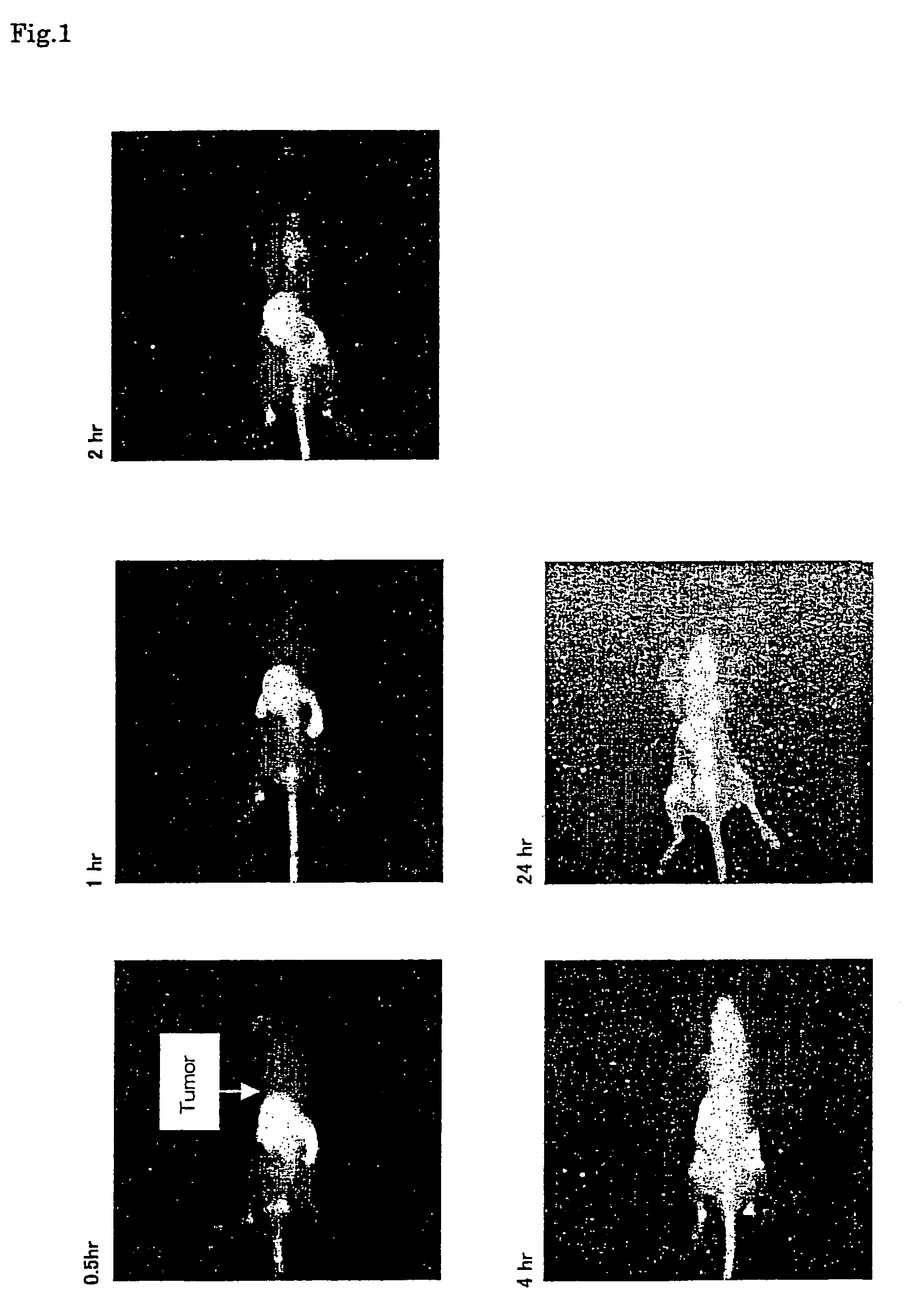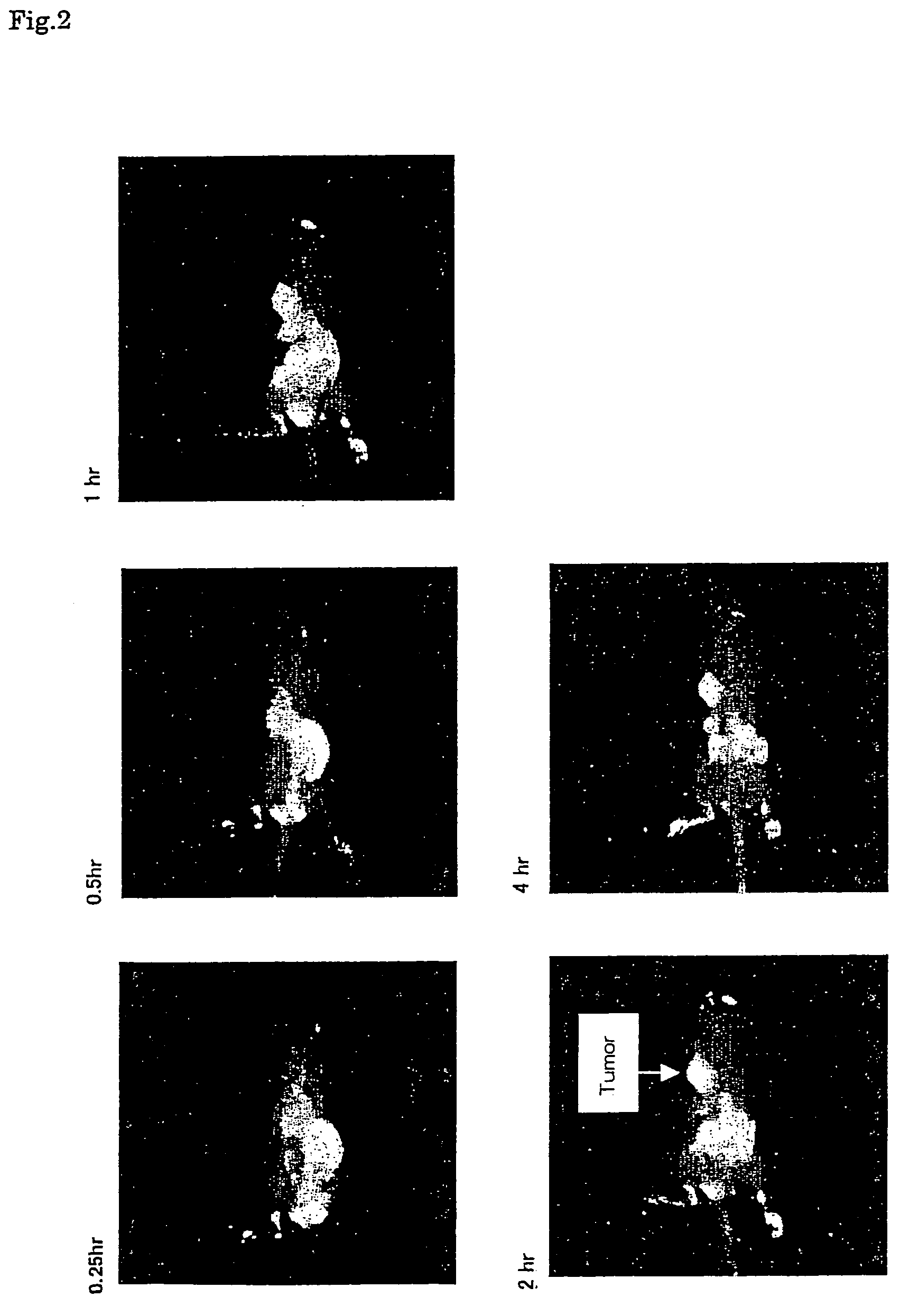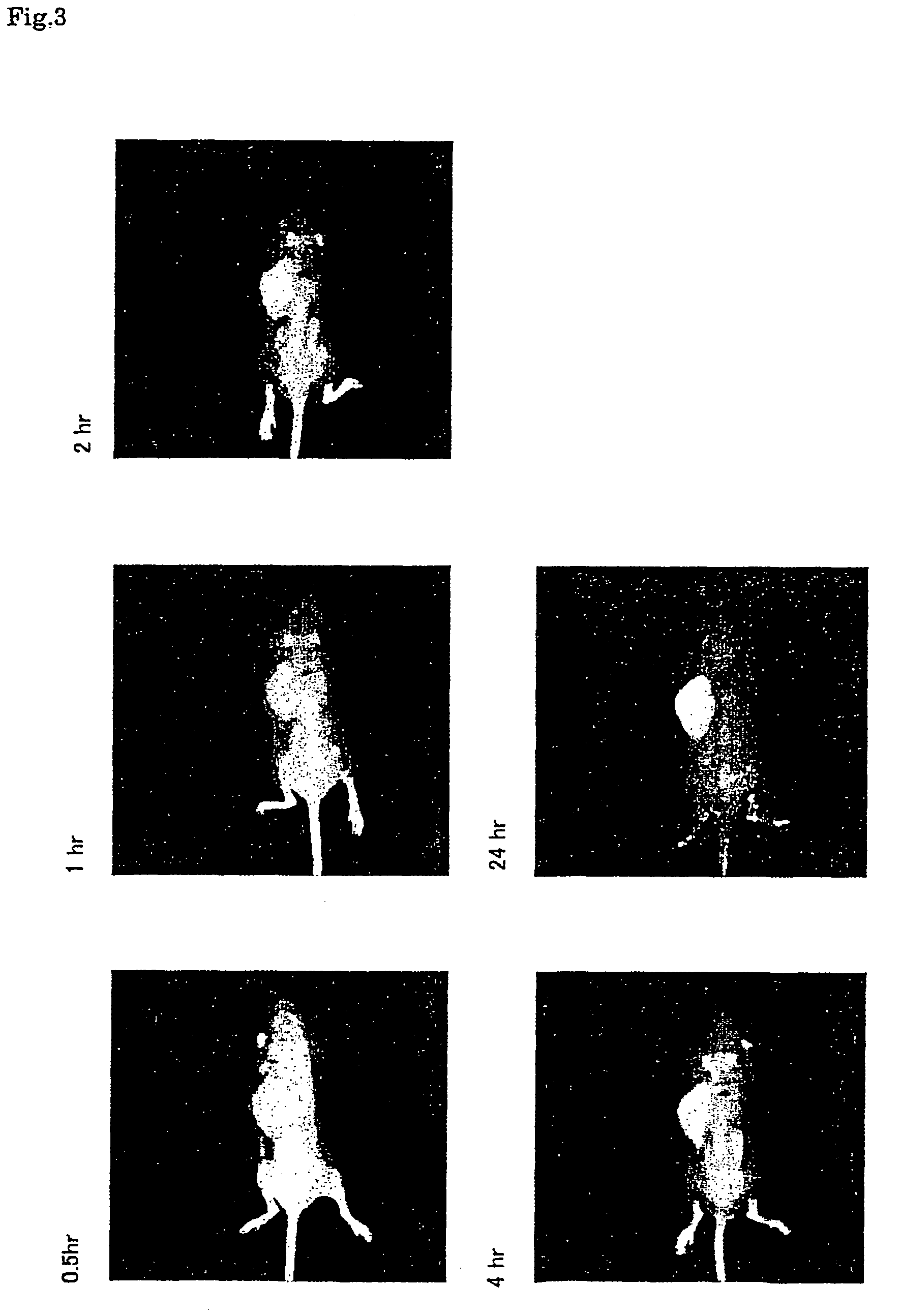Near infrared fluorescent contrast agent and method for fluorescence imaging
a fluorescent contrast agent and near infrared technology, applied in the field of near infrared fluorescent contrast agent and fluorescence imaging, can solve the problems of irradiation or electromagnetic wave exposure of unsuitable for tracing changes, and large burden on patients to be diagnosed, and achieve excellent permeability and specific imaging
- Summary
- Abstract
- Description
- Claims
- Application Information
AI Technical Summary
Benefits of technology
Problems solved by technology
Method used
Image
Examples
example 1
Synthesis of Compound 1, Compound 2, and Compound 3
[0070]Synthetic route of Compound 1 is shown below.
[0071]
Synthesis of Intermediate 1
[0072]The starting material 1 (20.9 g, 0.1 mol), 2-bromopropinic acid (23.0 g, 0.15 mol), and o-dichlorobenzene (20 ml) were heated and stirred at 140° C. for 2 hours. After the reaction was completed, the reaction mixture was added with acetone (200 ml) and cooled to room temperature, and then the resultant crystal was filtrated to obtain Intermediate 1 (20.3 g, yield: 56%)
Synthesis of Intermediate 2
[0073]The Intermediate 1 obtained above (10.0 g, 28 mmol) and 1,7-diaza-1,7-diphenyl-1,3,5-heptatriene hydrochloride (3.9 g, 14 mmol) were dissolved in acetonitrile (70 ml) and water (11 ml), and the resulting solution was added with triethylamine (8.4 g, 91 mmol) and acetic anhydride (8.5 g, 91 mmol) and the mixture was stirred at room temperature for overnight. The reaction mixture was added to 0.1N hydrochloric acid (900 ml) dropwise and the crystals ...
example 2
Synthesis of Compound 5
[0081]Compound 5 was synthesized from Intermediate 1 and 1,7-diaza-5-methyl-1,7-diphenyl-1,3,5-heptatriene monohydrate in a similar manner to that for Compound 1.
[0082]1H-NMR (CD3OD) δ 2.00 (s, 12H), 2.44 (s, 3H), 2.73 (d, J=7.2 Hz, 4H), 2.82 (t, J=7.2 Hz, 4H), 3.31 (MeOH), 4.50 (t, J=7.2 Hz, 4H), 4.69 (t, J=7.2 Hz, 2H), 4.88 (H2O), 6.41 (d, J=13.2 Hz, 2H), 6.65 (d, J=13.2 Hz, 2H), 7.43-7.50 (m, 2H), 7.58-7.67 (m, 4H), 7.95-8.05 (m, 4H), 8.10-8.27 (m, 4H)
example 3
Synthesis of Compound 6
[0083]Compound 6 was synthesized from Intermediate 1 and 1,7-diaza-5-methyl-1,7-diphenyl-1,3,5-heptatriene monohydrate in a similar manner to that for Compound 1 except that L-glutamic acid-di-t-butylester monohydrate was used instead of L-aspartic acid-di-t-butylester monohydrate.
[0084]1H-NMR (CD3OD) δ 1.80-2.15 (m, 4H), 2.01 (s, 12H), 2.28 (t, J=7.2 Hz, 4H), 2.44 (s, 3H), 2.82 (t, J=7.2 Hz, 4H), 3.31 (MeOH), 4.40-4.50 (m, 2H), 4.51 (t, J=7.2 Hz, 4H), 4.88 (H2O), 6.42 (d, J=13.2 Hz, 2H), 6.65 (d, J=13.2 Hz, 2H), 7.42-7.50 (m, 2H), 7.57-7.67 (m, 4H), 7.95-8.05 (m, 4H), 8.10-8.27 (m, 4H)
PUM
| Property | Measurement | Unit |
|---|---|---|
| lapse time | aaaaa | aaaaa |
| wavelength | aaaaa | aaaaa |
| wavelength | aaaaa | aaaaa |
Abstract
Description
Claims
Application Information
 Login to View More
Login to View More - R&D
- Intellectual Property
- Life Sciences
- Materials
- Tech Scout
- Unparalleled Data Quality
- Higher Quality Content
- 60% Fewer Hallucinations
Browse by: Latest US Patents, China's latest patents, Technical Efficacy Thesaurus, Application Domain, Technology Topic, Popular Technical Reports.
© 2025 PatSnap. All rights reserved.Legal|Privacy policy|Modern Slavery Act Transparency Statement|Sitemap|About US| Contact US: help@patsnap.com



